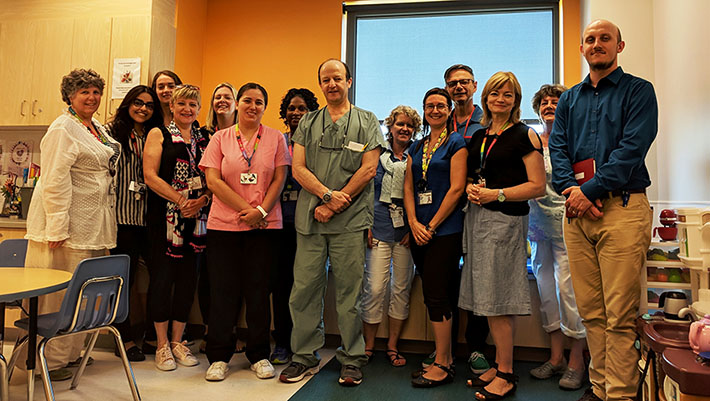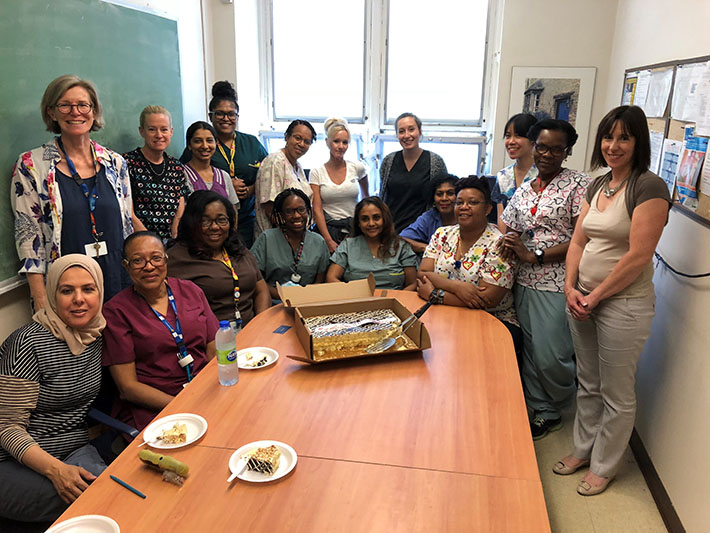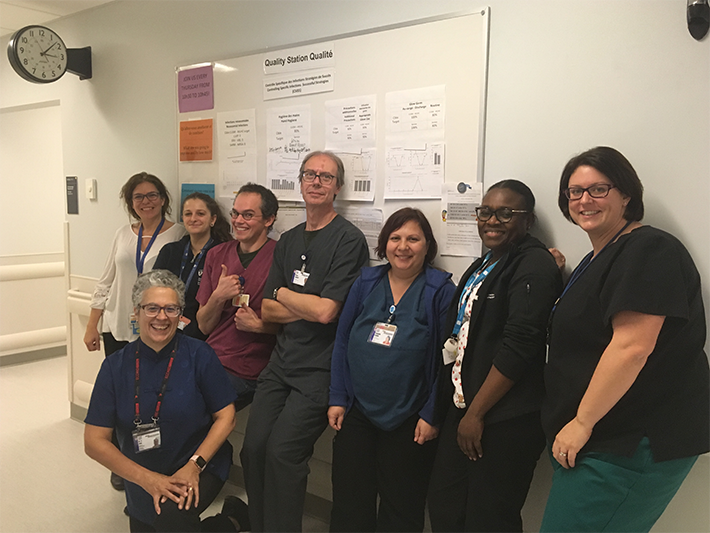A deserved round of applause...
Dealing with hospital acquired infections, known as nosocomial infections, is a challenge that requires sustained and continuous efforts by all. Infection control and prevention measures, including hand hygiene, can greatly help reduce the number of outbreaks and protect patients, staff and visitors from the transmission of viruses and pathogens that cause the flu, clostridium difficile, viral gastroenteritis, and many other infections.
Significant efforts are being made at the McGill University Health Centre (MUHC) to reinforce best practices in hand hygiene and to improve compliance to achieve targets set by the Ministry of Health and Social Services.
These efforts are part of the Controlling Specific Infection - Successful Strategies (CSISS) program, which aims to implement a systematic verification of practices throughout the organization and to ensure access to sinks and hand sanitizers.

The program also focuses on teaching, setting a good example, leadership and communication.
Each wash counts
"Washing hands is considered a simple gesture, but it is not always easy to meet the highest standards of hand hygiene in hospitals," says Anaïck Briand, project manager in Nursing. "It involves washing your hands repeatedly, dozens of times a day, before and after you have been in contact with each patient or their environment, whether you are a nurse, doctor, orderly, or health and safety officer."
In fact, anyone can carry microbes without knowing it. The best way to avoid getting infected and contaminating others is to have clean hands.
In units where the CSISS program has been implemented, hundreds of observations of hand hygiene measures are made every year. Anaïck explains, "I work with the care unit leadership teams, infection control consultants, and health and safety supervisors. Together, we observe the staff and take notes. This allows us to paint a picture of the situation and compile statistics that we display on a chart in all care units. "
In addition, a weekly meeting (huddle) takes place around a whiteboard called "quality station". All personnel present on the unit during the huddle are invited to participate.
This meeting is used to evaluate the infection rates, which are listed on the chart, and to analyze the results of the hand hygiene audits. Meetings are an opportunity to celebrate small victories, point out what is not working and resolve problematic situations as quickly as possible.
"The methodology is an important success factor for the CSISS program," says Alyson Turner, assistant director of Nursing. “Having up-to-date data, and having the opportunity to discuss it as a team as we do during huddles, is really key."

‘Healthy’ competition
Recognition of the progress and results is also very important. This is why the CSISS steering committee now organizes an annual hand hygiene competition between the care units and takes the time to reward the teams with the best results.
The winning teams are the ones who get the best hand hygiene rates.
Five teams won the competition in 2018 and were congratulated at a small celebration held during the summer in each winning care unit.
"I ordered cakes for the winning teams, making sure there was enough for all the staff, day and night shifts," says Anaïck. “The little cake break was well appreciated, and we took the opportunity to reiterate the importance of maintaining the efforts and the good results, of course!"
"It's hard to take a break to congratulate yourself on a daily basis," says Alyson. “It is always busy on the floor. But people enjoy receiving positive feedback; it's important to offer it to them."
We took advantage of these informal meetings to ask each team what was the secret to their success. Here are the five winning teams, their hand hygiene rate and a summary of responses.
 |
Unit C10, Royal Victoria Hospital Result achieved: 93%Success factors mentioned:
|
 |
Unit B7, Montreal Children's Hospital Result obtained: 89%Success factors mentioned:
|
 |
Unit 15, Montreal General Hospital Result obtained: 91%Success factors mentioned:
|
 |
Unit D8, Respiratory Intensive Care Unit, Montreal Chest Institute Result obtained: 81%Success factors mentioned:
|
 |
Emergency, Royal Victoria Hospital Result obtained: 78%Success factors mentioned:
|
Did you know?
- Touching a single contaminated surface can transfer pathogens up to the next seven touched surfaces.
- Vancomycin-resistant Enterococci (VRE) can live on a surface for up to four months and Cdifficile can live on a surface for up to two years.
